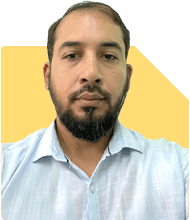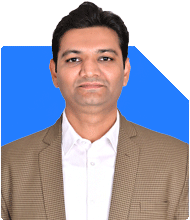Hello sir....
I wanted to pursue ba/bsc psychology from a rci approved college but I don't have any clearity that what should be right. Since I have passed 12th in this year only I have given my cuet but my marks where not that good to get into any college I have filled the form of Calcutta University where I can get addmission through my 12th marks that is 72% overall but I didn't get into any as I'm from general category and cut offs are high.. mop up rounds are still yet to happen.
But I talked there.. there are barely some colleges which are serious about teaching psychology and I don't think I can get into some good college that's why I'm thinking to take a drop I don't want to still and abhi bhi looking for some colleges which maybe have seat vacant so that I can try to get into that.. i don't have any clarity regarding which is good govt college because I can't afford private colleges whose fees is that high for pursuing psycology if I'm taking a gap year
Ans: Ayushi, With 72% in Class XII, you meet eligibility for most RCI-approved undergraduate psychology programs, which typically require 50–55% in PCM/Science or Humanities and English proficiency. The Rehabilitation Council of India (RCI) mandates that psychology graduates from approved institutions can register as professionals, so ensure the college holds RCI recognition or operates under a parent university with RCI-approved syllabi.
In West Bengal, government options are limited. The closely watched University of Calcutta offers a three-year BA Psychology through its morning shift at Ashutosh College and evening shift at Surendranath College with cutoffs often around 80% in general category. Vacancy rounds sometimes dip to 70–72%, so mop-up rounds could open seats. Rabindra Bharati University provides BA Psychology via merit; its cutoff hovers near 75%. Vidyasagar University in Midnapore and North Bengal University at Jalpaiguri offer BSc Psychology with lower cutoffs (65–70%), making them accessible.
Government colleges in Northern India include University of Delhi’s Cluster Innovation Centre and Gargi College, both offering BA Psychology admissions purely on Class XII marks. Their cutoffs range from 85–90%, so direct admission is unlikely at 72%, though invitation to waitlists in niche sections (e.g., evening courses) can occur. Banaras Hindu University’s BSc Psychology has a 70–75% cutoff in mop-up rounds. Panjab University (Chandigarh) and Punjab University (Patiala) allow 65–70% entries in BSc Psychology programs. University of Lucknow and Aligarh Muslim University also admit on board marks, often requiring 70–75%.
Affordable private institutions in West Bengal with RCI-approved curricula include St. Xavier’s College, Kolkata, which conducts its own merit list and lowers cutoffs to 72% in later rounds. Presidency University also admits psychology undergraduates through its merit list. In North India, Christ University (Bengaluru campus) and Amity University offer scholarships to board-mark entrants drops seats for those without CUET scores, but fees remain higher. DAV College, Chandigarh, and Maitreyi College, Delhi, provide BA Psychology at moderate fees (?30,000–40,000 per year) based on 12th marks.
Practical Roadmap and Solutions
Track Mop-Up Rounds and Merit Lists: Immediately monitor UC, Rabindra Bharati, Presidency, and St. Xavier’s websites daily for vacancies. Prepare scanned documents for swift online submission.
Apply to Multiple Institutes: Simultaneously apply to Vidyasagar University, North Bengal University, BHU, Panjab University, and Lucknow University in their ongoing merit-based admission windows. Their lower cutoffs increase chances.
Secure Waiting-List Positions: For high-demand colleges like Calcutta University and Delhi University, join all available waitlists, including evening programmes, which often have softer cutoffs.
Explore Evening/Shift Courses: Many reputed institutions offer evening or self-financed sections with relaxed cutoffs. Investigate Ashutosh College evening shift, DU evening courses, and PU self-financed sections.
Financial Planning for Private Colleges: Shortlist affordable options Inquire about scholarships or fee-installment plans at DAV College Chandigarh and Maitreyi College to help mitigate costs.
Bridge Courses and Summer Programs: As you finalize admissions, consider enrolling in online certificate courses in introductory psychology, research methods, and statistics from platforms like NPTEL or Coursera to enhance your portfolio.
Consider Gap-Year Strategy: If no suitable seat materializes by mid-October, plan a structured gap year focused on significantly improving CUET scores. Engage in disciplined self-study with coaching for CUET’s aptitude, English, and psychology modules.
CUET Preparation: Develop a timetable allocating two hours daily for CUET Psychology syllabus (foundations, developmental, abnormal, social, and research methods) and one hour for General English and Logical Reasoning. Use previous years’ CUET papers and take weekly mocks to track progress.
Alternate Entrance Exams: Some private universities conduct their own entrance tests (Christ University’s CUCET, Amity’s AUEET). Register for these supplementary exams to widen your admission avenues.
Mentorship and Counseling: Seek guidance from academic mentors or a career counselor to evaluate admission offers, financial implications, and long-term career trajectories in clinical, counseling, or research psychology.
By following this multipronged approach—pursuing merit-based vacancies, evening/self-financed programs, affordable private colleges, and preparing for CUET retake if required—you can maximize your chances of enrolling in an RCI-approved psychology UG programme without forfeiting a year.
Exhaust mop-up and merit-based admission options in government and reputed private colleges by mid-October, while preparing a robust CUET retake plan during a potential gap year to secure admission into top-tier psychology programs. All the BEST for a Prosperous Future!
Follow RediffGURUS to Know More on 'Careers | Money | Health | Relationships'.





























